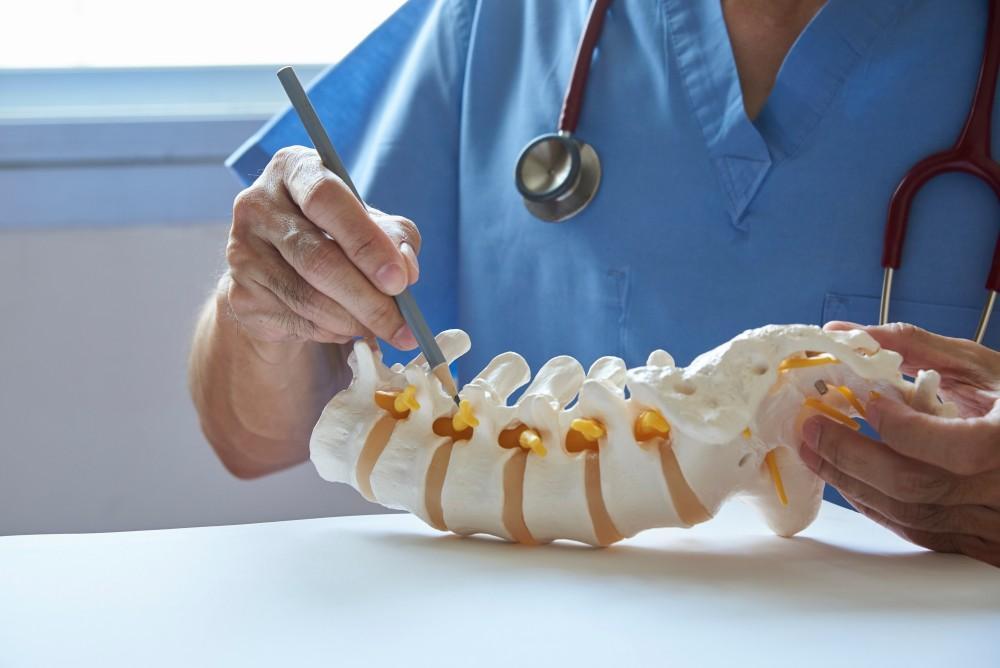
How Does Surgery for Sciatica Work?

Sciatica is a widespread source of pain, affecting some 40% of Americans during their lifetimes. It’s caused by pressure on the sciatic nerve root in the spinal canal, called a “pinched” nerve or an “impingement.”
The sciatic nerve is the longest nerve in your body, stretching from the root in the lumbar (lower back) spine and splitting off into two branches near the tailbone. Each branch travels through your buttocks, down the outside of your legs, and into your feet. Because sciatica is a form of radicular (radiating) pain, you can experience pain, weakness, and numbness anywhere along its extended route. The pain may be intermittent or constant, and it can vary from a mild annoyance to so debilitating you can’t walk.
At Vertrae®, board-certified neurosurgeon Dr. Kamal R. Woods and his team know how painful sciatica can be and how it can impair your daily activities. That’s why they offer a number of different treatment options, both conservative and surgical. If you need surgery for your sciatica, you may wonder how it works. Our expert explains it here.
What causes sciatica?
There are many different causes of sciatica, so getting a professional diagnosis is important. The condition is uncommon in the under-20 set, except for a traumatic injury. The most common other causes include:
Aging
Aging stresses your body, and that includes your spine. Two of the most common causes of a pinched sciatic nerve occur more frequently as you age. The first is herniated discs, where the cushiony material between the vertebrae loses moisture, sometimes flattens out, and sometimes breaks. A flattened disc or the inner disc gel pushes into the spinal canal, pressing on the sciatic nerve root.
The second cause is bone spurs, bony growths that develop when the bones’ cartilage wears away and the vertebrae rub against each other; the extensions also push into the canal, pinching the nerve root.
Weighing too much
Excess weight puts excess pressure on your spine and spinal nerve roots, and a 2014 study found an association (though not a direct causal link) between being overweight or obese and developing sciatica. It may sound a bit repetitive, but a well-balanced diet and regular exercise are the best ways to help you shed weight and reduce your pain while at the same time improving your cardiovascular and overall health.
On-the-job hazards
You wouldn’t expect a desk job to be risky, but sitting at your desk all day, especially if your set-up isn’t ergonomically designed, is one of the worst things you can do for your back and for your sciatic nerve. Poor posture, combined with prolonged sitting, stresses your spine, discs, and supporting soft tissues, putting pressure on the nerve roots.
In addition, jobs where you routinely bend and twist or lift heavy objects increase your risk for sciatica, as you’re continually putting pressure on your spine. To protect your spine, lift from your knees, not your back.
What are conservative sciatica treatments?
Sciatica may go away on its own; if not, it generally responds well to conservative treatments, which is where we always start. We target both your symptoms and the underlying problem(s) that causes them. The three conservative treatments we use include:
1. Oral medications
These include non-steroidal anti-inflammatory drugs (e.g. ibuprofen, naproxen), which relieve pain by decreasing inflammation. If over-the-counter NSAIDs aren’t effective, we can prescribe something stronger.
2. Steroid injections
These contain a fast-acting anesthetic for immediate pain relief and a longer-acting steroid that calms inflammation. We inject the medication directly into the joint that’s causing the problem, eliminating your symptoms for several months. That allows you to participate in the third treatment option — physical therapy.
3. Physical therapy
Physical therapy (PT) improves the range of motion while strengthening tissues in the lower body.
How does surgery for sciatica work?
When conservative measures don’t provide relief, Dr. Woods may offer one of two surgical procedures:
1. Laminectomy
A laminectomy addresses problems such as bone spurs or a narrowing of the spinal canal (stenosis). Dr. Woods removes the part of the vertebra(e) producing the symptoms, thereby eliminating pressure on your nerves, relieving pain, and restoring your range of motion.
2. Microdiscectomy
In this minimally invasive procedure, Dr. Woods cuts back or removes the herniated disc pushing on the sciatic nerve, relieving pressure on the nerve root.
Dr. Woods specializes in minimally invasive procedures, so if you need surgery, you know you’ll be in good hands.
If you’re dealing with the pain and discomfort of sciatica, it’s time to come into Vertrae® for an evaluation and treatment. To learn more, or to schedule with Dr. Woods, call us at either our Dayton or Springfield, Ohio location, or book online with us today.
You Might Also Enjoy...


5 Common Signs of a Compression Fracture

Using Your Own Platelet-Rich Plasma to Alleviate Your Back Pain

A Closer Look at Your Sacroiliac Joint

4 Benefits of Outpatient Spine Surgery

